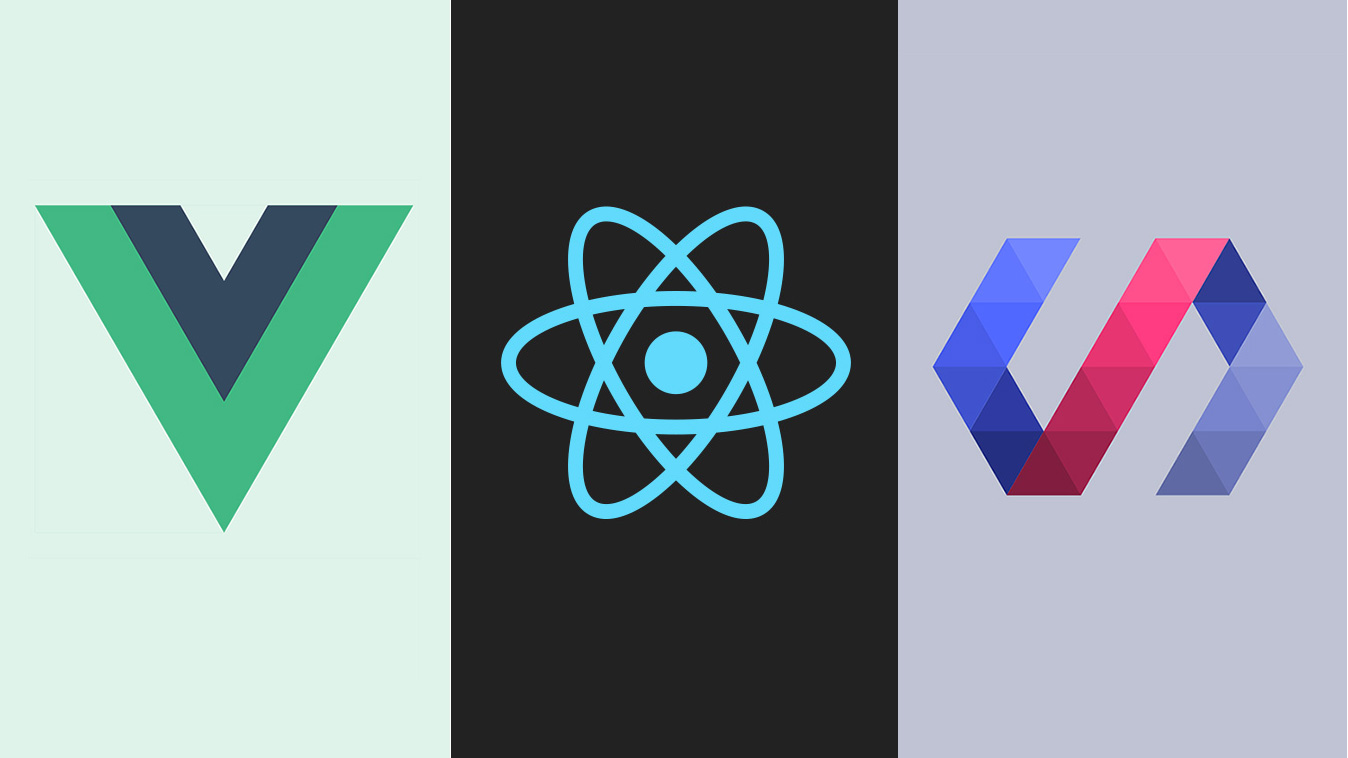

JavaScript (JS) is a dynamic programming language that can make changes and additions to CSS and HTML code. JavaScript conforms to the ECMAScript specifications and is used to manage, validate, and manipulate data.
JavaScript frameworks are tools to simplify the JS development process. They provide developers with ready-made templates that allow them to reuse common code snippets. This approach significantly reduces development time.
Below is a list of the 6 most popular JavaScript frameworks in 2021
React
React is an open source framework created by Facebook developers in 2013. React has quickly become the most popular framework for developing online stores because it allows you to create a dynamic interface and can withstand high traffic.
Among the main features of React:
- Consists of a set of components ready for reuse.
- Uses the componentDidMount() method, which allows React code to execute after the component has been placed in the DOM.
- Rendering technology improves the performance of the application and saves the developer from the extra work of recalculating the page layout.
Benefits of React:
- relatively small size;
- ease of study and use;
- increased performance.
Flaws:
- additional frameworks are needed;
- constant updates.
Angular
Angular is a powerful, efficient open source JavaScript framework. Not suitable for beginners, requires deep knowledge of JavaScript. Used by international companies such as Forbes and Google.
Some features of Angular:
- High performance on all platforms.
- Provides feedback and quick bug fixes.
- Provides an advanced API.
- Includes many additional features.
Benefits of Angular:
- separates data and presentation;
- quickly displays any changes;
- perfect integration of model and view.
Flaws:
- the complexity of learning for novice programmers;
- the need to learn MVC, the scheme of division into components ("Model-View-Controller").
Node.js
Developers use the Node.js framework to improve the functionality of the backend. Node.JS works equally well on all platforms and is open source. It exposes JAVA properties such as packaging, looping, and streaming using the JavaScript runtime. The framework is often used to create applications in the field of IT and healthcare.
Main features include:
High code execution speed thanks to the V8 Javascript engine used in Google Chrome.
- No data buffering.
- Open source.
- High scalability.
- MIT license.
- Single thread of execution.
Benefits of Node.JS:
- ease of study;
- high performance;
- maintaining a large and active developer community;
- extended support for frequently used tools.
Flaws:
- lacks a strong library support system;
- The API is constantly changing.
Vue.js
The Vue.js framework has gained popularity in developing powerful single page applications. Widely used to create cross-platform applications.
Among the key features:
- The simple concept makes it easy to understand and use.
- Includes built-in tools for creating animations and animated transitions.
- The data binding technique allows manipulation of HTML attributes.
- Uses efficient DOM (Document Object Model).
Benefits of Vue.js:
- flexibility and ease of manipulation;
- relatively small size;
- ease of integration.
Flaws:
- not very suitable for scalable applications;
- does not have many necessary plugins;
- does not provide a multilingual interface.
Ember.js
The Ember.js framework was first introduced in 2015. It is used by many international services - LinkedIn, Yahoo and Netflix including. Ember supports integration with popular tools like Node.js, Semantic UI and Bootstrap.
Some of the key features:
- Reusable and easy to connect.
- Suitable for large team work.
- Provides over 1500 different add-ons.
- Offers CSS and HTML models.
- Has a set of tools for debugging applications.
Ember Benefits:
- client-side rendering;
- great URL support.
Flaws:
- not as fast as other frameworks;
- difficult to study.
Polymer
Polymer is a popular open source JavaScript library created by Google developers and volunteers on GitHub. Polymer helps you create custom elements and HTML tags to suit your needs. Used in services such as Google Maps and Youtube.
Some key features:
- Supports new web standards and technologies.
- Fast learning process.
- Support for Shadow DOM technology.
- The best JavaScript framework for progressive web applications.
- Used to create reusable widgets in web documents and applications.
- Provides for the creation of custom elements.
Polymer Advantages:
- creating custom elements using HTML, CSS and JSS;
- quick and easy connection to third-party libraries;
- one-way and two-way data binding;
- ease of study.
Flaws:
- poor performance on mobile platforms;
- complex implementation of large-scale applications.
Conclusion
JavaScript frameworks simplify the work of developers and improve the performance of web applications. To select the most suitable JavaScript framework, it is necessary to clearly formulate the requirements for the platform. To do this, you need to take into account the functionality of the future application and the skill level of the development team.
Do you like it? Share:
© 2025 All rights reserved.
AI Redentu
Assistant
Welcome to
Ai Assistant
Start chatting with Ai Redentu Assistant. But first, learn about its capabilities.
Portfolio
Show me Redentu's portfolio
Services
What services does Redentu offer?
Technologies
What technologies does Redentu work with?
Contact Us
How can I contact Redentu?


